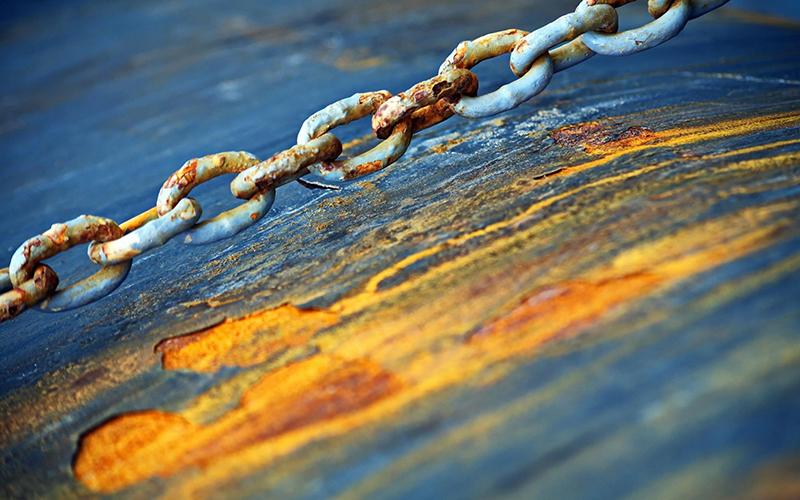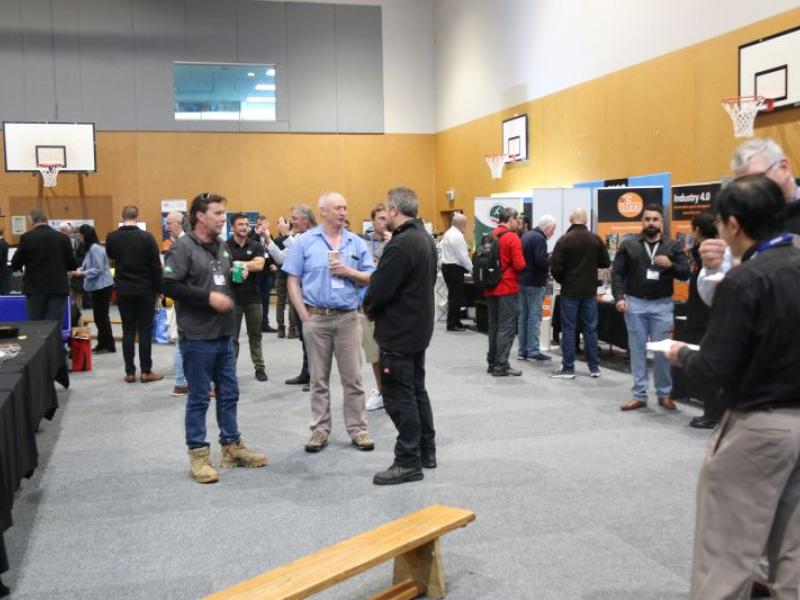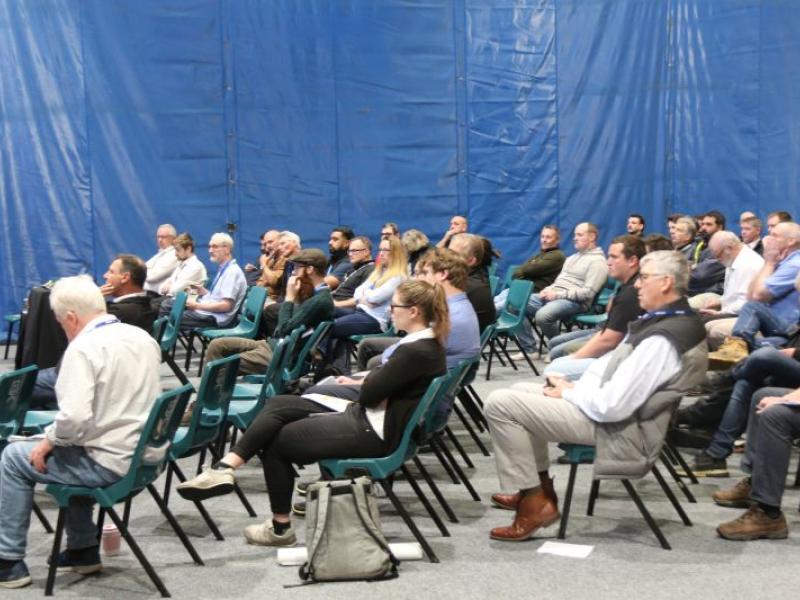Defect classification is a crucial step in determining if goods should pass or fail a quality control inspection. Minor defects usually don’t affect the function or form of the item, whereas major defects could adversely affect the function, operational performance or aesthetics. But, how do you determine when aesthetic surface damage needs action? Here, Chris Johnson, managing director of bearing specialist SMB Bearings, explains why not all bearing surface damage should cause alarm and future headaches for offshore oil and gas plant managers.
Bearing surface distress can take many forms and can result in problematic symptoms such as excessive heat, increased noise levels, increased vibration or excessive shaft movement. However, not all external bearing flaws point to compromised internal machine performance.
One such form of bearing surface damage is corrosion. This is a naturally occurring phenomenon that offshore oil and gas plant managers must commonly confront. While there are ten primary forms of this pesky enemy, bearing corrosion usually falls into two broad categories — moisture corrosion or frictional corrosion.
Moisture corrosion is particularly commonplace in offshore mining environments and worryingly, can appear on any component of the bearing. For example, if bearings are often exposed to moisture or mild alkalinity due to their contact with sea water, this could create an alarming oxide layer as a result of a chemical reaction with the metal surface. Mild corrosion may result in light surface stains, but in more serious cases, it can lead to etching on the surface of the bearing, resulting in flakes of rusted material entering the raceway.
In these severe instances, corrosion can graduate from an aesthetic inconvenience to a very real drain on a business’ bottom line. According to the IMPACT study conducted by NACE International, the world’s leading corrosion control organisation, it has been estimated that 15-35 per cent of annual corrosion could have been saved if optimum corrosion management practices were followed. This equates to savings between US$375 and $875 billion annually on a global basis.
The overall effect of corrosion is inherently damaging to offshore structures, as it weakens the structural integrity of the facility itself. What’s more, it’s impossible to ignore the significance of corrosion costs. However, corrosion resistance must be considered alongside other operating requirements such as bearing longevity and load. After all, there are many external factors that can prematurely affect a component’s operating life.
For example, a marine riser tension system is required to operate with precision but must also operate in unforgiving conditions, which threaten contamination. Due to the extreme environment of oil and gas rigs, corrosion resistant bearings would be recommended. If a design engineer were to opt for a highly corrosion resistant bearing fabricated from polyether ether ketone (PEEK), this would stop the corrosion in its tracks, but the precision of the machine would be compromised. In this scenario opting for a high precision stainless steel bearing with superior roundness, while allowing some superficial corrosion may be preferable.
In the fight against corrosion, ensuring the right equipment is selected is the first step — and this is imperative for both large-scale machinery and small components, such as bearings. So, what are the key bearing design considerations for offshore environments?
Choose your material with care
For offshore oil and gas facilities, stainless steel is the most obvious bearing material choice. It offers corrosion resistance, but also benefits from other advantageous properties such as durability and heat resistance. The latter is particularly important, as rates of corrosion can increase in environments with pressure and heat.
440 grade stainless steel, for instance, is known for its resistance to damp environments. However, this grade has poor resistance to salt water and many stronger chemicals. Consequently, for harsh offshore environments, 316 stainless steel may be considered. However, as 316 stainless steel cannot be thermally hardened, these bearings are only suitable for low load and low speed applications. They should only be used in marine applications above the water line, or in flowing, oxygenated water.
An alternative material option is ceramic. Full ceramic bearings made from zirconia or silicon nitride with PEEK cages can offer even higher levels of corrosion resistance and are often used fully submerged. Similarly, plastic bearings, with 316 stainless steel or glass balls, provide very good resistance to corrosion. These are often made from acetal resin (POM) but other materials are available for stronger acids and alkalis such as PEEK, polytetrafluoroethylene (PTFE) and polyvinylidene fluoride (PVDF). Like 316 grade bearings, these should only be used in low load and low precision applications.
Another level of armour against corrosion, is a protective coating. Chromium and nickel plating offer good corrosion resistance in highly corrosive environments. However, coatings will eventually separate from the bearing and need continual maintenance. For this reason, coatings aren’t the most practical option for offshore environments. To protect machinery and equipment from failure, internal components must be high quality and preferably, low maintenance.
Match your lubricant to the application
Surface roughness and lubrication affect whether surface distress will occur, so opting for the correct lubricant matters. A proper lubricant will reduce friction between the internal sliding surfaces of the bearing’s components, dissipate heat and inhibit corrosion on the balls and raceways.
Superficial corrosion may occur on the outside of the bearing; however, it should not be allowed to occur on the inside. Opting for a sealed bearing with waterproof greases that contain corrosion inhibitors, is advised. These lubricants protect the internal surfaces of the bearing and can be matched to the specific offshore application environment. Full ceramic bearings are mostly specified without lubrication but can be lubricated with waterproof grease for extended life.
In harsh environments, contamination protection is of utmost importance, so opting for a contact seal is favourable to ensure contaminants do not enter the bearing. For equipment that may be exposed to moisture, a contact seal will also offer increased water resistance. This will stop grease washing out of the bearing, allowing it to do its job in lubricating and protecting the internal surfaces of the bearing. An alternative option is a metal shield, but this offers greatly reduced protection against moisture.
The enemy or a harmless distraction?
Corrosion control is just one performance requirement, which doesn’t necessarily equate to poor performance or affect the bearing’s internal rollability. Downtime is one of the biggest challenges for offshore facilities, so a holistic design approach must be followed to increase equipment uptime and minimise maintenance.
Luckily, offshore facility managers can assess the operational environment, required longevity and loads that will be applied to the bearing and can weigh up whether opting for a corrosion control design feature will be the most cost effective, increase the bearing’s lifespan and elevate a machine’s performance. After all, the best bearing may not be the one that remains looking aesthetically pleasing for the longest.
Need to source corrosion resistant bearings for an offshore application? Visit the SMB Bearings website or contact a specialist today sales@smbbearings.com.
Chris Johnson is managing director at SMB Bearings. Having held this position for over ten years, he is a specialist in bearing and lubrication services.
www: http://www.smbbearings.com/
e-mail: sales@smbbearings.com






